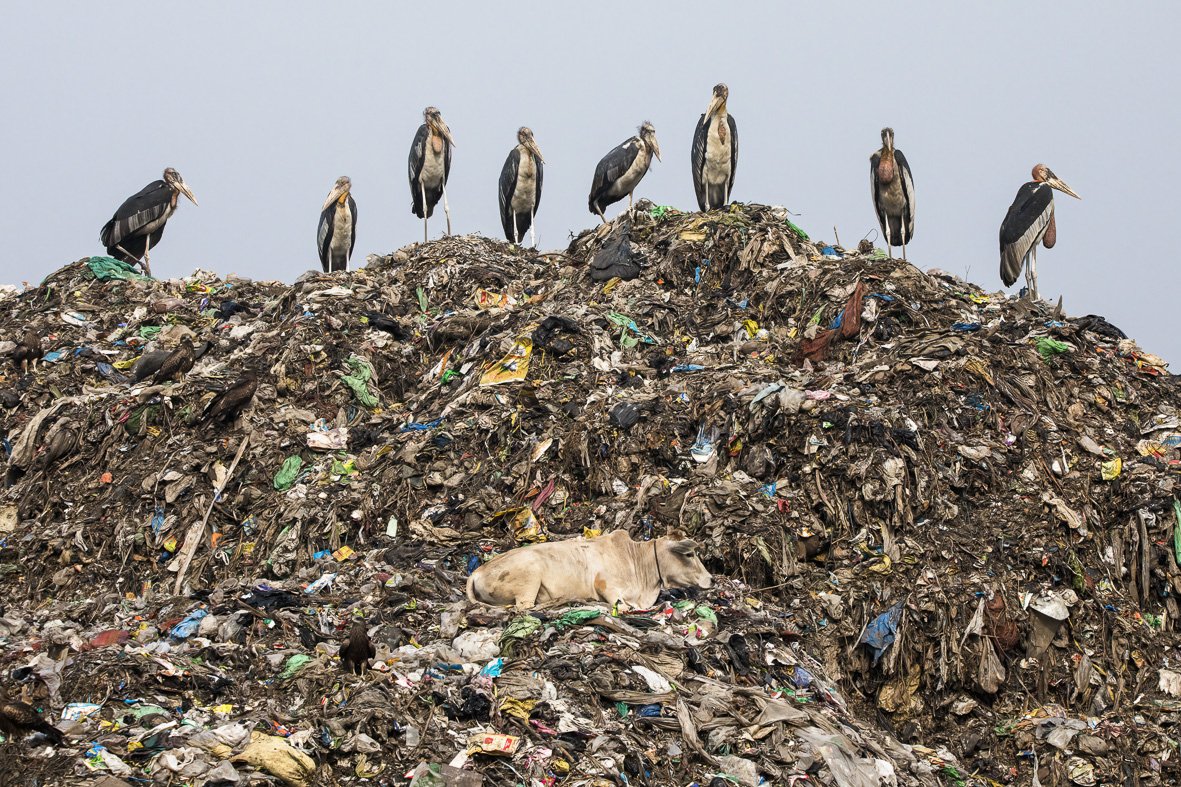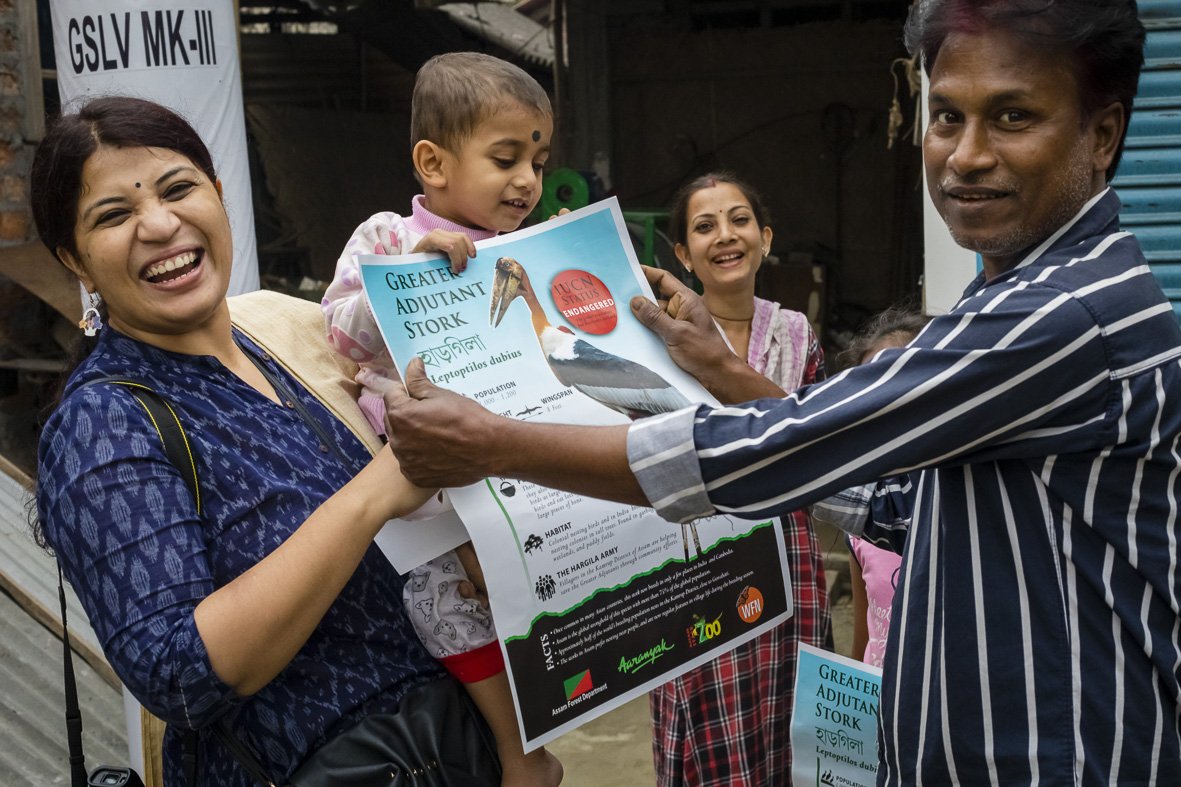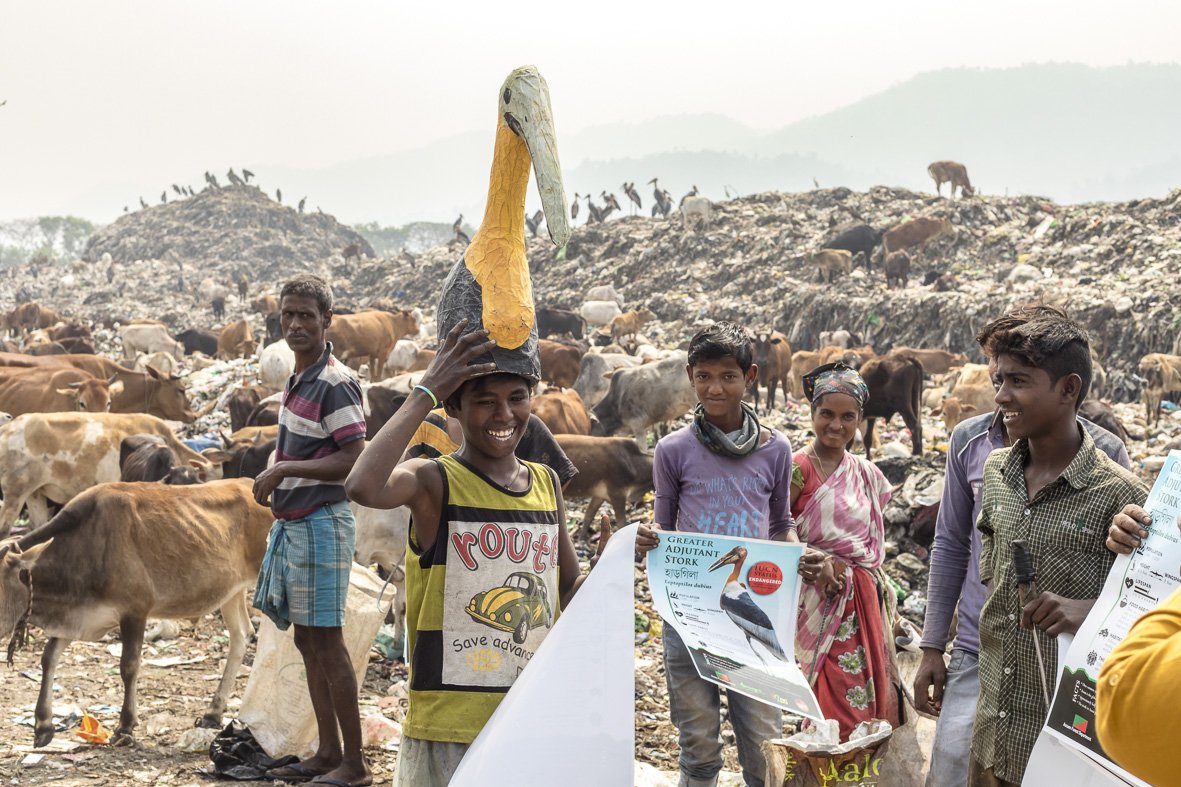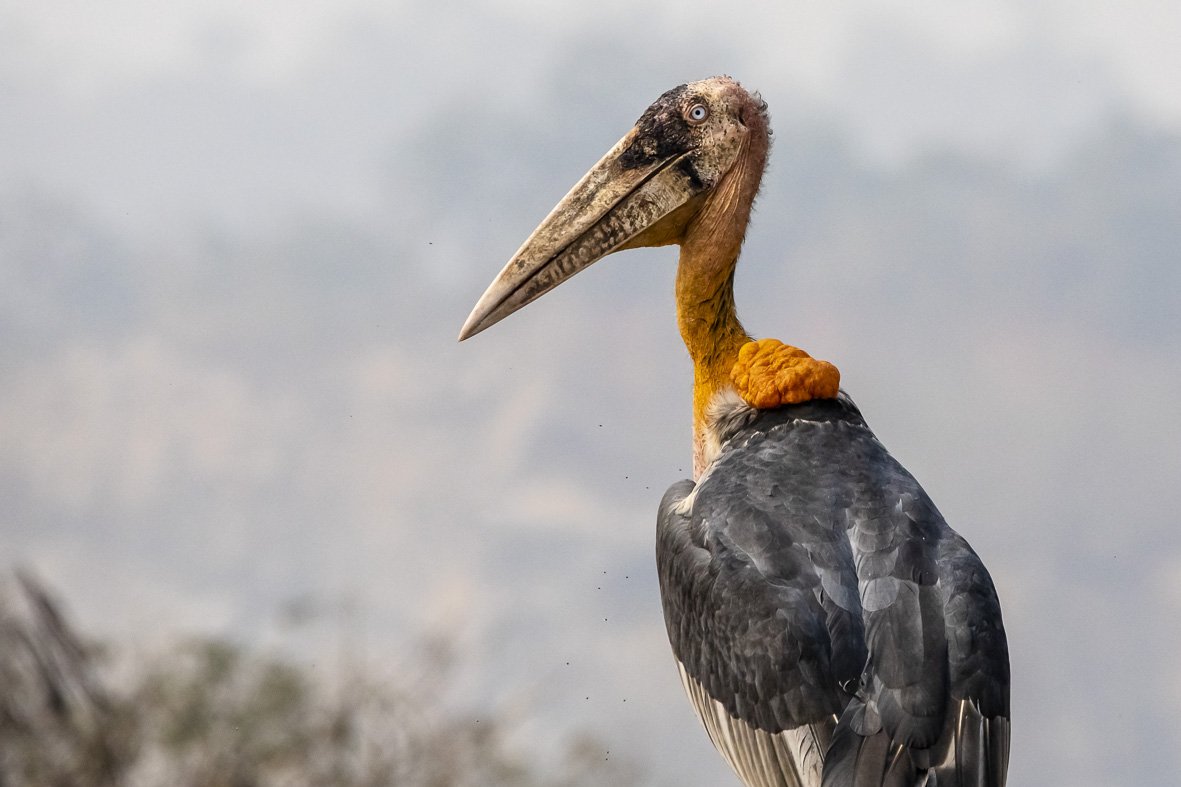




Beautiful Scavengers: Saving Endangered Greater Adjutants
© Carla Rhodes
Author Name: Carla Rhodes
Author Location: Woodstock, NY, United States
Author Background: Carla Rhodes is a wildlife conservation photographer. Formerly a ventriloquist, she brings a plethora of unique skills to her new career. Photographing with passion and a sense of humor, her published work includes pieces for The New York Times, bioGraphic and Smithsonian Magazine. Ultimately, she aspires for her photographs to educate viewers while inspiring positive change. You can see more of her work at www.carlarhodes.com.
Submission Statement: Greater Adjutants are the most endangered storks on our planet. Towering at 5 feet tall with a wingspan of 8 feet, less than 1,200 of these beautiful scavengers are left in existence. The global stronghold of an estimated 950 Greater Adjutants resides in Assam, India. Known locally as Hargila (bone-swallower), Greater Adjutants have struggled to overcome a negative reputation that is saddled with superstition. They scavenge in the Boragaon landfill, which encroaches on Deepor Beel, a Ramsar-protected wetland. Greater Adjutants nest in large trees in the nearby villages of the Kamrup District. Biologist Purnima Devi Barman has dedicated her life to leading an inspiring and innovative conservation movement to save Greater Adjutants. Founder of the Hargila Army, a local all-female grassroots volunteer conservation effort, Barman and her army of women protect nesting trees, save fallen birds, and educate the Assamese community on the importance of these rare scavengers. Cultivating personal relationships with villagers is a key component of Barman’s successful conservation model. Since efforts began in 2010, nesting trees have not been cut down locally due to resident villagers of the Kamrup District protecting the Greater Adjutant’s nesting trees, which are often located in their own backyards. Nests have grown from 28 to more than 200 due to their combined conservation efforts.
RARE SCAVENGERS
Endangered Greater Adjutants gather atop the towering garbage located in the Boragaon landfill, Guwahati, India on February 24, 2020. The landfill has the largest year-round concentration of Greater Adjutant storks in the world. Attracting a variety of scavenger species and encroaching upon Deepor Beel wetland, the landfill causes pollution, habitat destruction and wildlife deaths through toxic seepage. Once covering 4,000ha, the wetland has shrunk to an alarming 500ha. Out of the world’s 19 species of storks, the Greater Adjutant is the rarest and most endangered.The Zoological Society of London classified the bird as an EDGE species in 2014, meaning it is close to extinction. In 2016, the International Union for Conservation of Nature estimated only 800-1200 individuals were left, firmly cementing their status as endangered with a decreasing population.
CAMPAIGNING FOR HARGILA
Biologist and founder of the Hargila Army Purnima Devi Barman is pictured distributing informational Greater Adjutant posters to the local community in Kamrup District, Assam, India. Barman regularly educates and empowers the Assamese community on the importance of endangered Greater Adjutants which are known locally as Hargila (bone swallower). Cultivating personal relationships with villagers and raising awareness are a key component to Barman’s successful conservation model, especially since many residents have Greater Adjutant nesting trees in their backyards.
EDUCATING THE FUTURE
Purnima Devi Barman is pictured presenting an educational program on endangered Greater Adjutants at a school located in the Kamrup District, Assam, India. She’s holding a textile woven by the Hargila Army, which features a Greater Adjutant design. This unique motif is now sewn and weaved into traditional textiles such as mekhala chadar and gamosas. Educational programs at local schools are a key part of Barman’s conservation efforts. If students are taught at a young age to love and respect Greater Adjutants, the species will have allies in the future. Visits are often a surprise, with students on the edge of hysterical elation at the appearance of “Hargila Baideo” – which Barman is called locally, translating to “elder sister of Greater Adjutants.”
CONNECTION THROUGH AWARENESS
Migrant rag pickers live and sort garbage in the Boragaon landfill where a large population of Greater Adjutants scavenge beside them. Barman presented informational posters, coloring pages and food to the people living and working in the sprawling landfill with the goal of raising awareness for the Greater Adjutants and bringing joy. A young boy who lives and works in the landfill is pictured in the foreground laughing while trying on a Greater Adjutant paper mache headdress. Guwahati, Assam, India.
Beautiful Scavenger
An endangered Greater Adjutant is pictured in the Boragaon landfill located in Guwahati, Assam India. The landfill has the largest year-round concentration of Greater Adjutant storks in the world. Out of the world’s 19 species of storks, the Greater Adjutant is the rarest and most endangered.The Zoological Society of London classified the bird as an EDGE species in 2014, meaning it is close to extinction. In 2016, the International Union for Conservation of Nature estimated only 800-1200 individuals were left, firmly cementing their status as endangered with a decreasing population.
Comments from the judges:
Karen Dias: “Lovely reportage about a very important story.”
Katie Jett Walls: “I appreciate the photographer's abilty to create a beautiful portrait of a bird that lives in this blighted environment. Solid storytelling photographs were accompanied by rich captions that indicate a dedication to understand both the bird and the work of those who are determined to protect it.”







